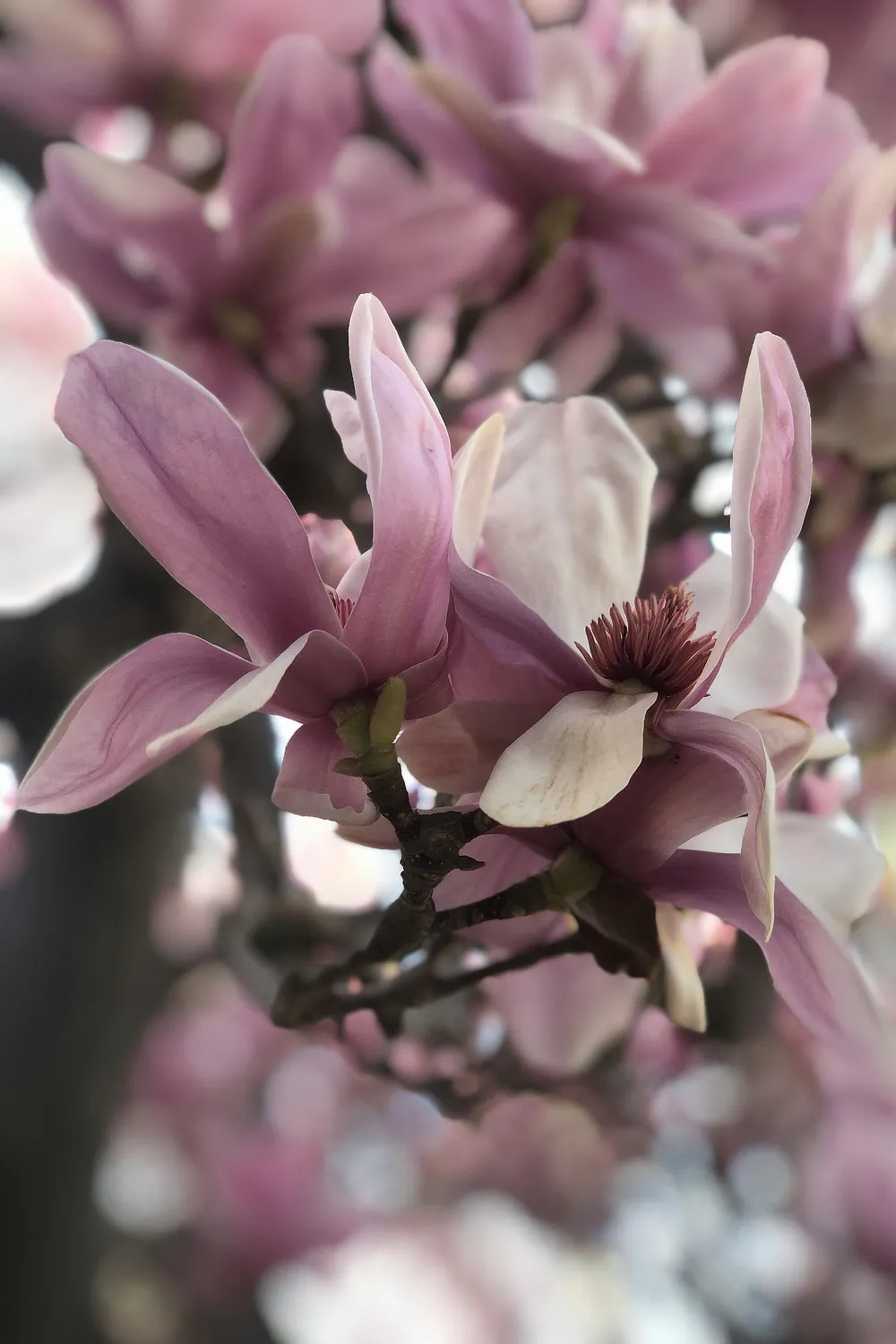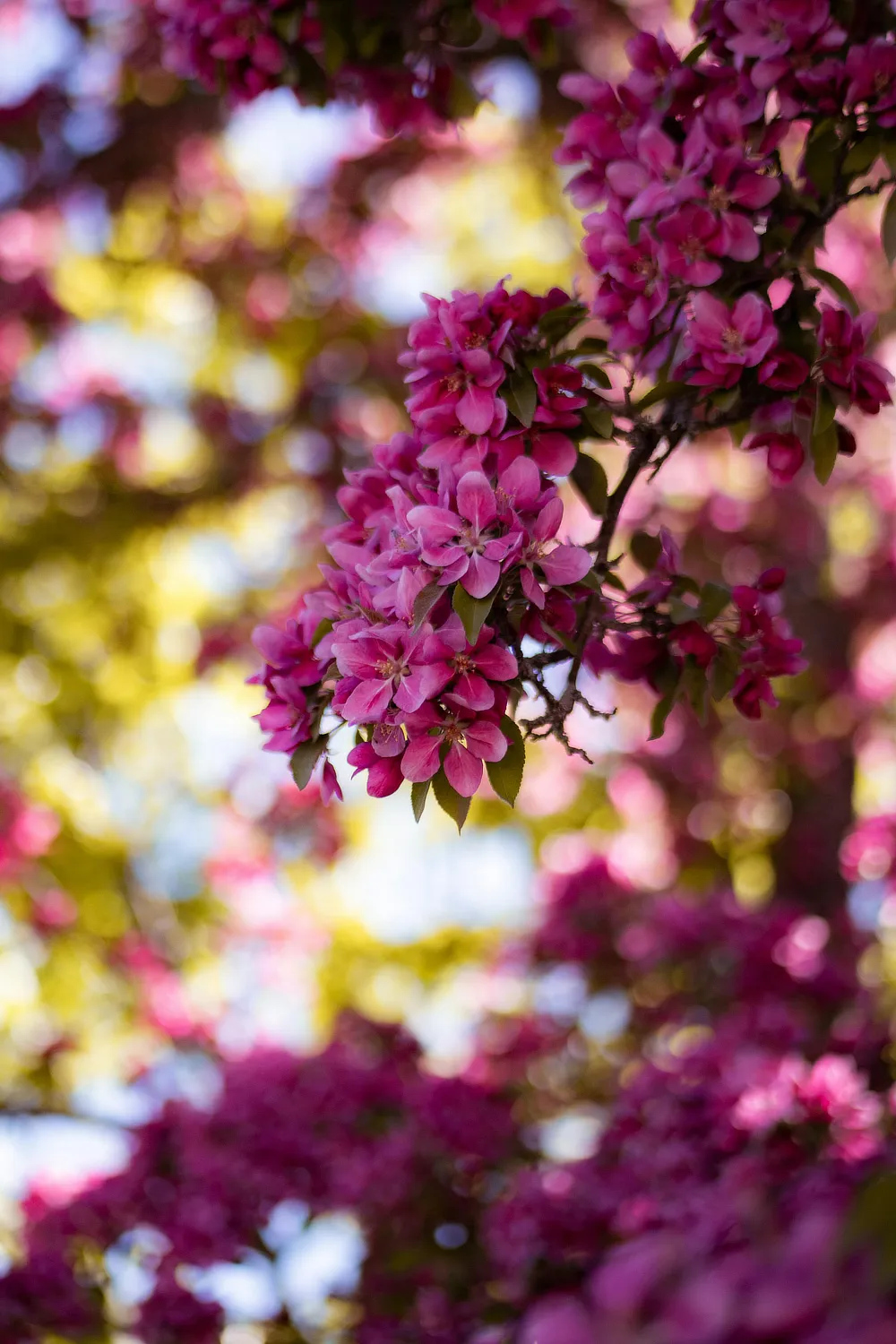Spring is here and our gardens are starting to look glorious! In the last week alone, mine has taken a huge step forward with long forming buds bursting to life with colourful and scented blooms! For an early spring garden there are a few plants you can add to your yard to give it that welcoming and warmer look.
The deciduous Magnolia x soulangeana is one of the first to come into bloom with its cup shaped flowers being born on bare stems. There are only a few days where the tree is only flowers before the leaves start to come out and its these few days in the year, I enjoy the most. The magnolia has been bred so much you can get them in various colours from pure white to yellow to pink and deep magenta purple, mine is a soft purple and white combination. To grow magnolias, you want to improve your soil with plenty of organic matter before planting as this will set the small tree up for life and mulch them well too. With the addition of organic matter to very sandy soils you should monitor the soil’s ability to absorb moisture as this sometimes exacerbates the problem, but an easy fix is the addition of a granulated wetting agent.
If you don’t like the magnolia (you silly billy) then alternatives that give the striking appearance of a flower on a bare stem look include ornamental cherries or flowering redbuds, also known as forest pansies. All these trees prefer a location where they receive morning sunlight and protection from the hot westerly rays. If you can give them a sheltered location away from any prevailing winds, you’ll get to enjoy the blossom for longer as well.
The may bush (Spirea) that lines my driveway is a wonderful greeting as I arrive home being covered in snow like flowers that fall to the ground like confetti. This bush is so easy to grow and will tolerate full sun and partial shade and still flower no matter the conditions. The only issues that hamper this shrub is congestion. If you notice a distinct drop in the number of flowers your plant gets its time to get brutal with it and give it a hard prune, low to the ground around 300mm high. Do this after flowering so the plant can bounce back quickly and flower for you the following year. This hard prune will require a little more watering to promote the new growth, but you will be rewarded with delightful lime green new shoots.
Loropetalum or China Pink is a deep purple foliage shrub that can be clipped into a hedge or let to grow in a looser shaped shrub – mine is clipped into various ball shapes a little like a fat cloud pruned Japanese tree! This shrub has lots of benefits when it comes to the look – the best part being the flowers are on older wood so even if you clip the plant, you’ll still get blooms deep set into the canopy and it’s the deep purple foliage and bright pink frilly flowers that contrast so well to give you big impact. It tolerates various soil types and aspects but does best in organic rich, free draining soil.
I have a large ugly shed that has become a large, beautiful display of creamy yellow rose flowers as its covered in one of the easiest roses to grow the climbing banksia rose. The shed is metal and faces due west, so it gets very hot and stays very hot, but the rose simply thrives. I never feed it and never water it, but I do keep it well mulched and must remember to stop pruning it in autumn to allow the canes to grow as long as possible to give me maximum flowers. Once the flowering has finished, I wrangle it back into shape by training the flexible new growth onto wires and cutting away any growth that is trying to grow on the roof of the shed. Throughout the year I also run a hedge trimmer up the face of it to maintain a formal appearance – this is just personal preference.
If you are after maximum scent, then Jasmine is a must have – so sweet some would say too much. I have it growing various spots around the garden as I love it. It grows above the carport lining the opening and greeting me when I pull up, but I also grow it in big tubs over a conical trellis to give great display that can be moved around the space. The benefit of growing in tubs is being able to contain this plant as it is a rapid grower and can take off and get away from you in a single season. Feed with a potassium rich fertiliser on the hotter days of late winter and when you can see buds forming to get maximum blooms, switching to an all-purpose for the rest for the year.


